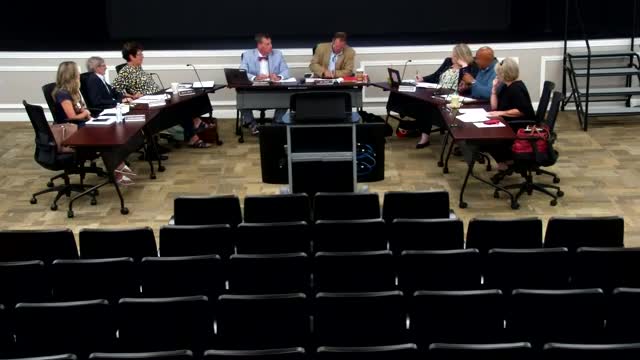Building Sports Complex Faces Hidden Costs and Challenges
July 26, 2024 | Henderson County Schools, School Districts, North Carolina

This article was created by AI summarizing key points discussed. AI makes mistakes, so for full details and context, please refer to the video of the full meeting. Please report any errors so we can fix them. Report an error »

During a recent government meeting, officials discussed the development of new sports facilities, including soccer fields, tennis courts, and a softball field. The conversation highlighted the importance of infrastructure costs, which often exceed initial estimates due to unseen expenses related to ground preparation and drainage systems.
One official noted that combining multiple soccer fields into a single large area could potentially reduce costs compared to constructing separate fields. The discussion emphasized that while the visible components, such as the courts and fields, have known costs, the hidden expenses—particularly those associated with proper site preparation—are significant.
Dr. Evans, a participant in the meeting, shared insights from his experience in building sports facilities, stressing that inadequate soil compaction can lead to long-term issues, such as cracking in tennis courts. He pointed out that over half of the project costs could stem from these foundational elements, which are crucial for the longevity and stability of the facilities.
Concerns were also raised about water drainage, especially given the proximity of residential homes to the proposed fields. The officials expressed a commitment to addressing these challenges to ensure the project meets community needs while remaining financially viable.
As the meeting concluded, there was a sense of optimism among the participants about moving forward with the project, acknowledging the lengthy discussions that had taken place to reach this point. The officials underscored the importance of transparency with the public regarding the complexities involved in such developments.
One official noted that combining multiple soccer fields into a single large area could potentially reduce costs compared to constructing separate fields. The discussion emphasized that while the visible components, such as the courts and fields, have known costs, the hidden expenses—particularly those associated with proper site preparation—are significant.
Dr. Evans, a participant in the meeting, shared insights from his experience in building sports facilities, stressing that inadequate soil compaction can lead to long-term issues, such as cracking in tennis courts. He pointed out that over half of the project costs could stem from these foundational elements, which are crucial for the longevity and stability of the facilities.
Concerns were also raised about water drainage, especially given the proximity of residential homes to the proposed fields. The officials expressed a commitment to addressing these challenges to ensure the project meets community needs while remaining financially viable.
As the meeting concluded, there was a sense of optimism among the participants about moving forward with the project, acknowledging the lengthy discussions that had taken place to reach this point. The officials underscored the importance of transparency with the public regarding the complexities involved in such developments.
View full meeting
This article is based on a recent meeting—watch the full video and explore the complete transcript for deeper insights into the discussion.
View full meeting
